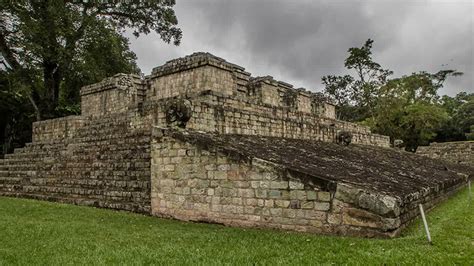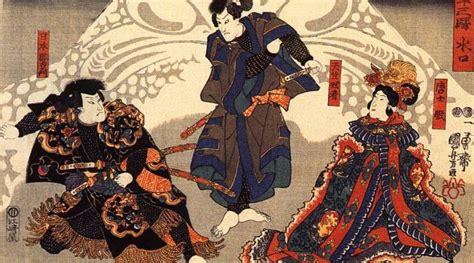Explore the rich history of Antigua and Barbuda from early settlement to modern independence. Learn about colonial influence, slavery, and cultural heritage.
Early Settlement of Antigua and Barbuda
Contents
History of Antigua and Barbuda
Early Settlement of Antigua and Barbuda
The early settlement of Antigua and Barbuda dates back to around 2400 BC when the Siboney people arrived on the islands. They were followed by the Arawak people, who lived there until the arrival of the Caribs around 1200 AD. The Caribs were the dominant group when Christopher Columbus landed on the islands in 1493. The Spanish attempted to colonize the islands, but they were unsuccessful. In 1632, the English established a permanent settlement on Antigua, and Barbuda was later colonized in 1684.
During the early years of colonization, the islands were used primarily as a base for naval operations and trade. The fertile soil and favorable climate made the islands suitable for cultivation, and the English settlers began growing tobacco and later, sugarcane. The proliferation of sugarcane plantations led to an increase in the demand for labor, which ultimately resulted in the importation of enslaved Africans to work on the plantations.
The early settlers faced numerous challenges, including conflicts with the Caribs, the harshness of the tropical climate, and struggles to establish sustainable agricultural practices. Despite these challenges, the English settlers were able to establish a thriving colony, and by the mid-18th century, Antigua and Barbuda had become an important center of the British sugar trade.
Today, the early settlement of Antigua and Barbuda is remembered through the preservation of historical landmarks and the celebration of the islands’ rich cultural heritage. Visitors can explore the remnants of colonial architecture, visit former sugar plantations, and learn about the impact of the early settlers on the islands’ development.
Colonial Era and European Influence
During the Colonial Era, Antigua and Barbuda were heavily influenced by European powers, particularly the British. The islands were first settled by the British in 1632, and they quickly established a thriving sugar plantation economy, relying heavily on enslaved labor from Africa. The European influence on the islands’ culture, language, and traditions during this time was profound.
Under British colonial rule, the islands of Antigua and Barbuda became an important hub for trade and commerce in the Caribbean. The British established a strong presence on the islands, building forts and other defensive structures to protect their interests in the region.
The impact of European influence during the Colonial Era can still be seen in the architecture and infrastructure of the islands today. Many of the buildings and landmarks that stand as a testament to this period in history are still well-preserved and serve as a reminder of the islands’ colonial past.
Additionally, European influence has left a lasting mark on the islands’ language, with English becoming the official language of Antigua and Barbuda. The European impact on the islands’ culinary traditions and customs is also significant, with British and European influences evident in many aspects of daily life.
Impact of Slavery and the Sugar Trade
Antigua and Barbuda have a long history of being involved in the lucrative sugar trade, which unfortunately also involved the institution of slavery. The impact of slavery and the sugar trade on the history and development of these islands cannot be understated. From the early days of colonization by European powers, Antigua and Barbuda became known for their fertile soil and ideal climate for growing sugar cane. This led to a massive demand for labor, which was met through the brutal system of slavery.
The effects of slavery and the sugar trade are still felt in Antigua and Barbuda to this day. The legacy of slavery has left a lasting impact on the cultural, social, and economic fabric of these islands. The labor-intensive sugar plantations shaped the landscape of Antigua and Barbuda, and the remnants of these plantations can still be seen throughout the islands.
Slavery also had a profound effect on the demographic makeup of the population, with a significant portion of the population being descended from enslaved Africans. This legacy has influenced the national identity and cultural heritage of Antigua and Barbuda, as the resilience and strength of the descendants of enslaved people are honored and celebrated.
The sugar trade brought immense wealth to the European plantation owners, while the enslaved laborers toiled in harsh conditions and received no compensation for their work. This stark disparity in wealth and power has had lasting impacts on the economic and social structures of the islands. Even after the abolition of slavery, the effects of this tumultuous period in history have shaped the trajectory of Antigua and Barbuda’s development.
In conclusion, the impact of slavery and the sugar trade on the history of Antigua and Barbuda is profound and undeniable. The scars of this dark period in history continue to shape the islands, but the resilience and strength of the people have also played a crucial role in shaping the modern identity of Antigua and Barbuda.
Independence and Modern Political History
After years of colonial rule, Antigua and Barbuda gained their independence from Great Britain on November 1, 1981. This marked a significant turning point in the political history of the twin-island nation. The road to independence was a challenging one, with the people of Antigua and Barbuda advocating for self-governance and freedom from British rule.
Following independence, the country transitioned into a parliamentary democracy, with a governor-general representing the British monarch as the head of state. The new government was dedicated to the advancement of the nation and the well-being of its people, implementing policies to address social and economic issues.
Modern political history in Antigua and Barbuda has been characterized by a two-party system, with the Antigua Labour Party and the United Progressive Party as the primary political entities. The two parties have vied for control of the government, leading to a dynamic and vibrant political landscape.
Over the years, the government of Antigua and Barbuda has focused on fostering international relations, strengthening ties with other nations, and participating in regional and global initiatives. The nation has become a respected voice in international affairs, advocating for issues such as climate change, sustainable development, and human rights.
Today, Antigua and Barbuda continue to progress as a sovereign nation, with a strong emphasis on democratic governance, social justice, and economic growth. The country’s modern political history reflects its determination to carve out its own path and make a positive impact on the world stage.
Cultural Heritage and National Identity
Antigua and Barbuda boast a rich and diverse cultural heritage that is deeply intertwined with the nation’s national identity. The unique blend of African, European, and indigenous influences has shaped the cultural landscape of these twin islands, resulting in a vibrant tapestry of traditions, customs, and beliefs.
The cultural heritage of Antigua and Barbuda is reflected in various aspects of daily life, from the traditional music and dance to the culinary delights and crafts. The lively rhythms of Calypso and steelpan music resonate throughout the islands, showcasing the African and Caribbean influences that have been integral to the development of the nation’s cultural identity.
Moreover, the culinary traditions of Antigua and Barbuda are a testament to the fusion of African, European, and indigenous ingredients and cooking techniques, resulting in a tantalizing array of dishes that reflect the diversity of the nation’s heritage. From the savory flavors of Fungi and Pepperpot to the sweet delights of Coconut Fudge and Tamarind Balls, the culinary heritage of Antigua and Barbuda is a true reflection of the nation’s cultural diversity.
Furthermore, the arts and crafts of Antigua and Barbuda offer a glimpse into the nation’s cultural heritage, with a unique blend of African, European, and indigenous influences evident in the vibrant textiles, intricate pottery, and intricate woodwork. These artistic expressions serve as a tangible reminder of the nation’s rich heritage and contribute to the preservation of its cultural identity.
Overall, the cultural heritage of Antigua and Barbuda plays a pivotal role in shaping the nation’s national identity, serving as a source of pride and unity for its people. The colorful tapestry of traditions, music, cuisine, and arts and crafts reflects the diverse influences that have shaped the nation’s heritage, making it an integral part of the nation’s identity in the modern world.














